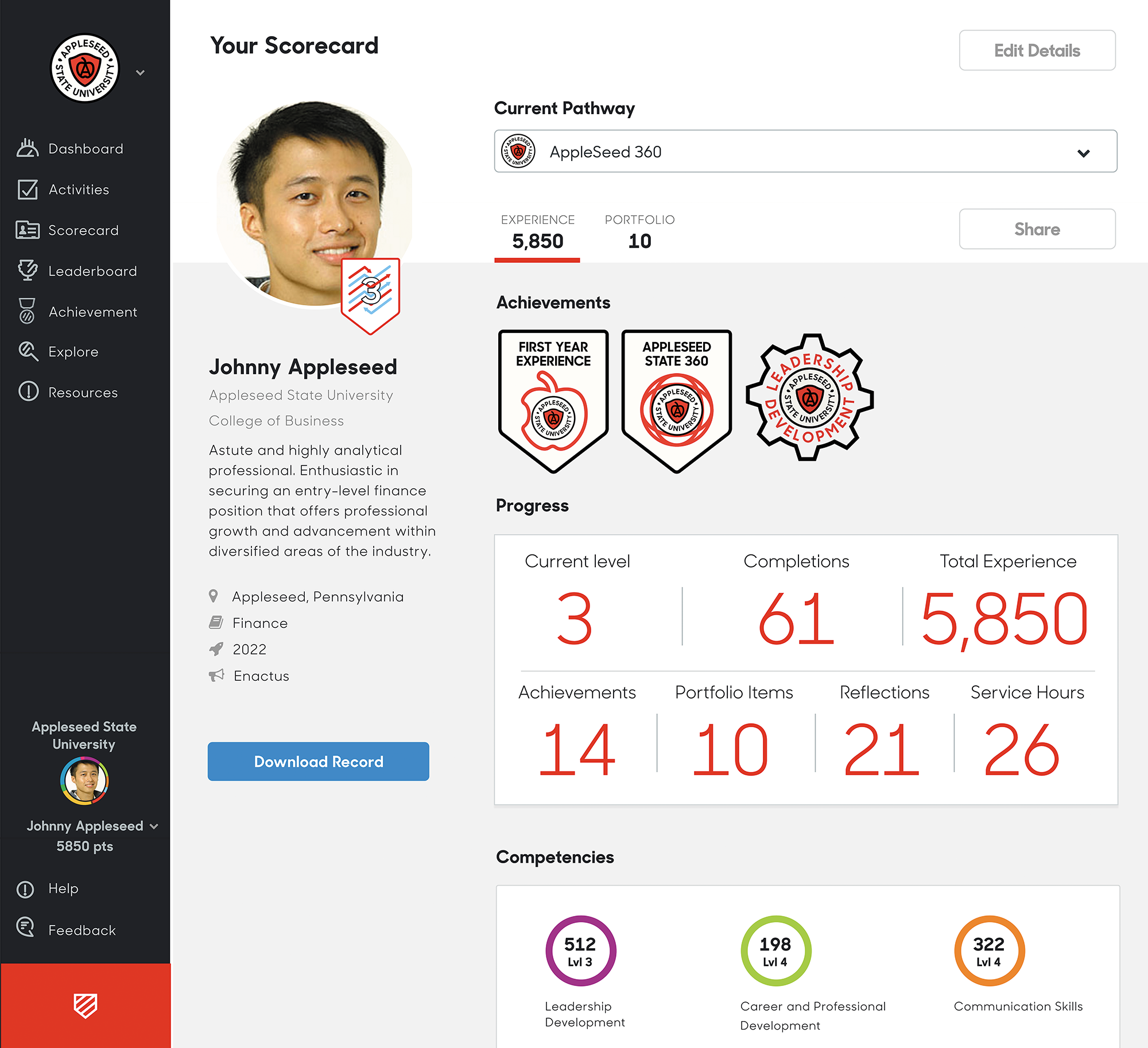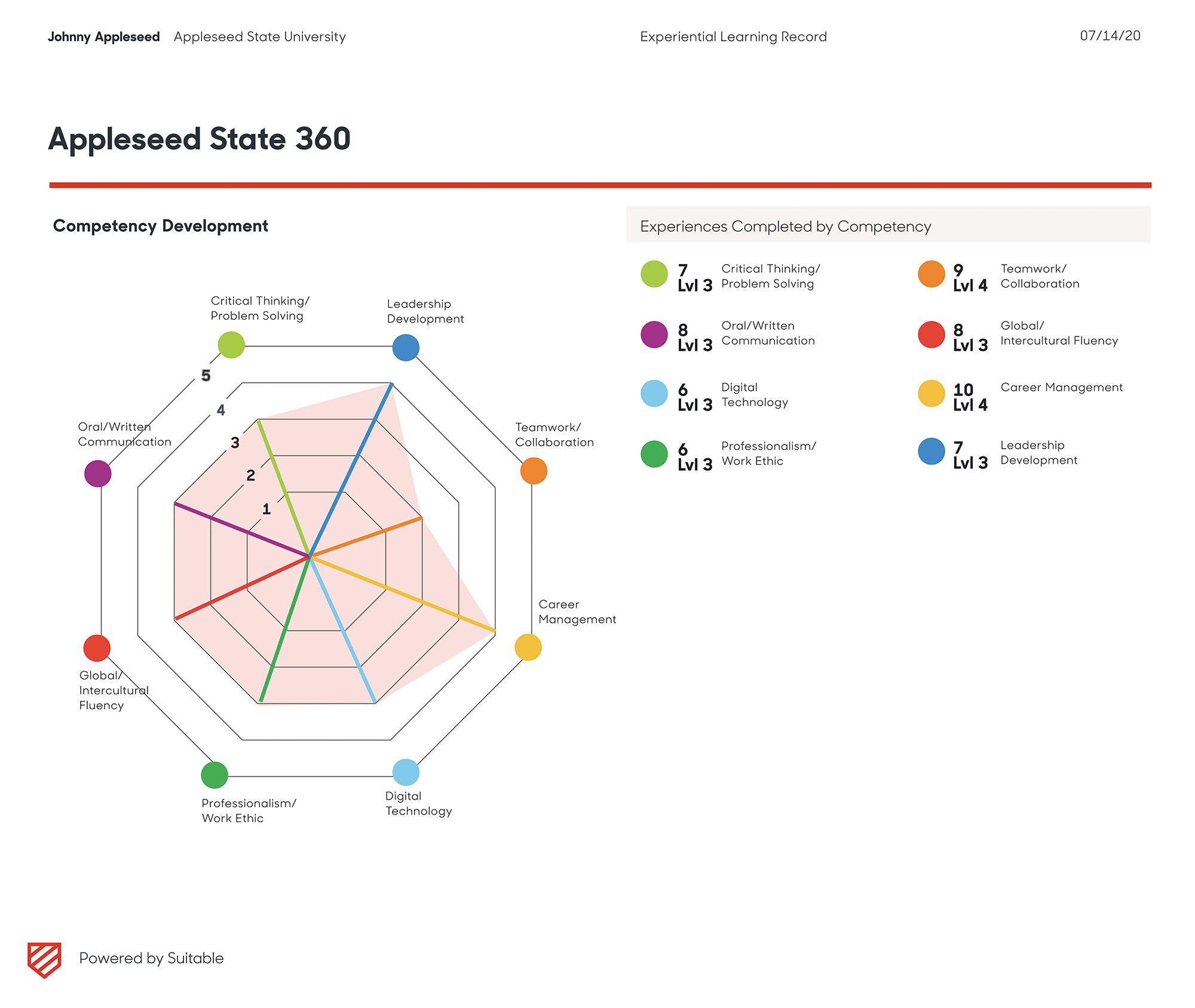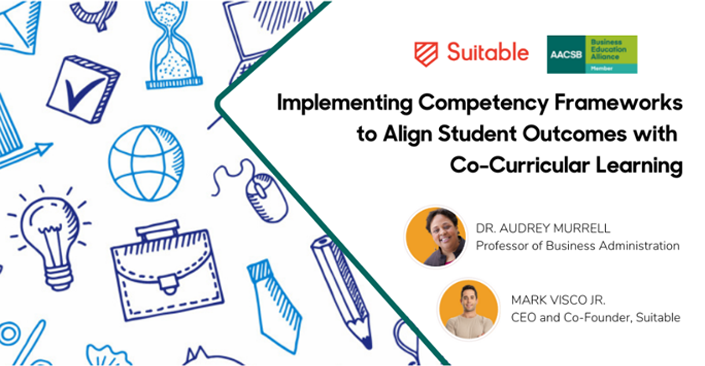Aligning Student Learning Outcomes With Assessment
Sponsored Content
- Schools embed learning objectives in their courses, but often they have difficulty determining if students are mastering stated objectives.
- The most effective learning competencies will be flexible, stackable, transferable, measurable.
- Competency frameworks allow schools to track the skills that students develop through both curricular and co-curricular activities.
Activities and efforts across our campuses have focused for several years on what we call the “how do we know” questions.
How do we know that we are achieving our education and learning objectives as students engage with us both inside and outside of the classroom?
How do we know that our specific approaches to educating the next generations of business professionals and leaders are effective?
How do we know if we are meeting key educational standards within our institution, our profession, and society?
Indeed, how do we know?
Research on competency-based education has examined the fundamental how do we know question for decades. Whether as faculty, administrators, participants, or advocates, we frequently ask our institutions and ourselves: How do we know that we are accomplishing our objectives within our courses, curricula, and co-curricular programs?
Answering this fundamental question is especially challenging given that the answer changes depending on who is asking it—faculty, administrators, alumni, or recruiters—and how they define the outcomes. The answer also depends on our assumptions about what we mean by “learning.” Is our focus on knowledge acquisition, knowledge application, or knowledge sharing/transfer? How and where do we believe learning takes place?
A Focus on Measuring Learning
One possible solution for controlling these assumptions may lie in our longstanding efforts to better define, measure, and refine key learning objectives in response to the dynamic needs of students, stakeholders, and society.
Situated learning theory tells us that students don’t come to us with equal knowledge and skills. Instead, students acquire knowledge and skills within a specific context that shapes both the content and the process of learning.
This perspective reminds us that learning is a social process and requires authentic contexts. This is where experiential learning can provide opportunities for knowledge and skill acquisition.
In the field of management education, situated learning challenges us to see learning not just in insulated classrooms, but in real-world experiences. This enables us to create dynamic, complex, social, diverse, and global learning environments both inside and outside of our university walls.
To create these environments, we must engage in ongoing dialogue on how we define, develop, and improve our educational impact across all levels—classroom, program, institution, and profession. Central to this conversation must be a focus on the definition and valuation of specific competencies that shape how we answer the “how do we know” question.
Designing a Competency Framework
Decades of research and best practices suggest that competencies are most effective when they are:
- Flexible: Targeted competencies should be adaptive across situations. In other words, they should take into account student needs and the changing context in which the educational experience takes place.
- Stackable: Competencies should outline clear pathways toward a valued and validated credential, whether that is a degree, a certificate, or a microcredential.
- Transferable: Competencies can be applied across different situations, environments, and fields while maintaining both their relevance and impact.
- Measurable: Each competency should contain some observable or quantifiable evidence of knowledge acquisition and/or application across various levels of proficiency.
A logical approach would be for institutions to select and pair these competencies within a structure that is relevant to learners, educators, programs, and institutions. However, in practice, most competencies are designed and implemented in a somewhat episodic manner. This approach might yield an expansive list of desired attributes, but the relevance and value of those attributes might be unclear to the various stakeholders such as students, recruiters, and parents. In short, frameworks are necessary.
The Value of a Competency Framework
Competency frameworks define what is to be developed and why it matters. They display connections and interrelationships between distinct competencies and outline pathways across various levels of acquisition and accomplishments. Frameworks provide a tool for navigating complex and dynamic environments. In addition, frameworks challenge us to think about learning outcomes and competencies that are not necessarily developed within a traditional classroom structure.
The student engagement software company Suitable provides one example of a framework that outlines competencies that are flexible, stackable, transferable, and measurable. The framework not only can include both curricular and co-curricular elements, it also can track experiential learning that is then linked to key student outcomes such as engagement, satisfaction, and completion.
One of Suitable’s unique offerings is its Co-Curricular Transcript, which shows how activities, projects, tasks, and experiences connect to specific competencies across different levels of knowledge acquisition and application. This feature makes any competency framework transparent to institutional leaders, faculty sponsors, employers, recruiters, and students. Student engagement and success are enhanced when all stakeholders understand the link between co-curricular experiences and competencies, because everyone can clearly see what is being taught, what is being learned, and what can be applied.
Integrating both curricular and co-curricular learning experiences within a clearly defined competency framework makes the assessment of outcomes and impact straightforward and effective.
A helpful example of a competency framework is the one used by the University of Pittsburgh. The Outside of the Classroom Curriculum (OCC) framework outlines a collection of experiences, programs, projects, and activities that help students make the most of their educational experiences.
Developed as a collaboration among faculty, staff, and student leaders, the Pitt OCC identifies 10 core competencies that not only are important to the educational experience, but also are relevant for graduates, whether they seek employment, pursue an advanced degree, go into public service, or become business owners. Data collected by the university show that students who complete the OCC have higher four-year and six-year graduation rates. Students also report feeling well-prepared when they interview for internships, admission to graduate school, or full-time employment.
Within different units such as the College of Business Administration, these competencies are flexible and adaptable enough to be customized for the specific needs of business students. In addition to providing a clear pathway of competencies and levels of attainment, this model includes a gamification component, which research shows can enhance student engagement.
The OCC competency framework allows for clear alignment with the school’s curriculum redesign, assessment of outcomes, and assurance of learning goals. For example, a student learning objective such as “analytics and decision making” or “exposure to diverse and global perspectives” can be linked directly to classroom content. But the same learning objective also can be tied to co-curricular activities, projects, and outside-the-classroom experiences.
In addition, the OCC defines these competencies across five distinct levels of completion: exposure, interaction, participation, expertise, and mastery. At each level and within each competency, students can receive a series of thematic badges that serve not only as microcredentials, but also as feedback, outlining the processes and pathways they can follow to completion.
The framework is flexible enough to integrate different competency-based microcredentials in response to emerging needs within the workplace or the broader social environment. For instance, the school could add competencies in data analytics, diversity and inclusion, leadership, or sustainability.
Engagement in the OCC can be directly linked to measurable outcomes such as engagement in career development, level of student satisfaction, and rate of degree completion. Data also can be used for activities such as trend analysis, assurance of learning, and ongoing evaluation for required accreditation. Clearly, maintaining the framework is an ongoing process of both development and transformation.
Flexibility and Innovation
A competency-based approach to measuring student learning provides schools both the structure and the opportunity to conduct assessments, improve programs, and innovate offerings. It also provides flexibility as different competencies, approaches, and constructs can be evaluated over time for their impact.
We often say that the future is filled with uncertainty. However, competency-based approaches that align with and assess learning goals both inside and outside of the classroom can provide schools with a roadmap that allows them to navigate uncertainty and drive innovation within it. To succeed in the future, we’ll need a winning strategy to address our ongoing “how do we know” questions. And competency-based frameworks are a great place to start.
To learn more about developing such frameworks, please register to join us for a webinar on October 5, 2022, at 1:00 p.m. Eastern Daylight Time. There, we will discuss in more detail the themes and research behind this article, and we will provide applicable business school examples and best practices. A post-event recording will be sent out to registrants who can’t attend live. Register at www.suitable.co/knowledge-center/events/competency-frameworks-align-student-outcomes.









